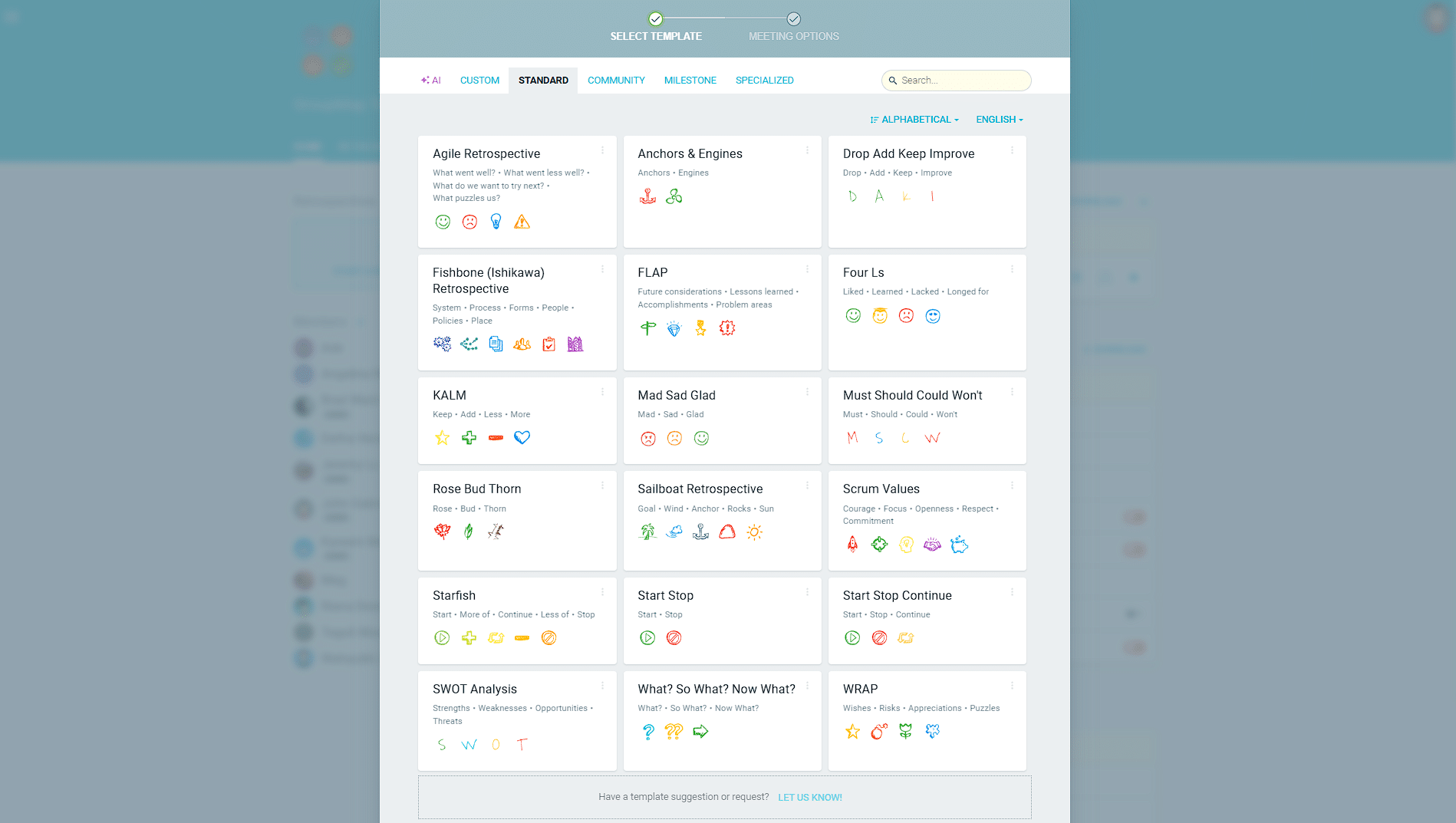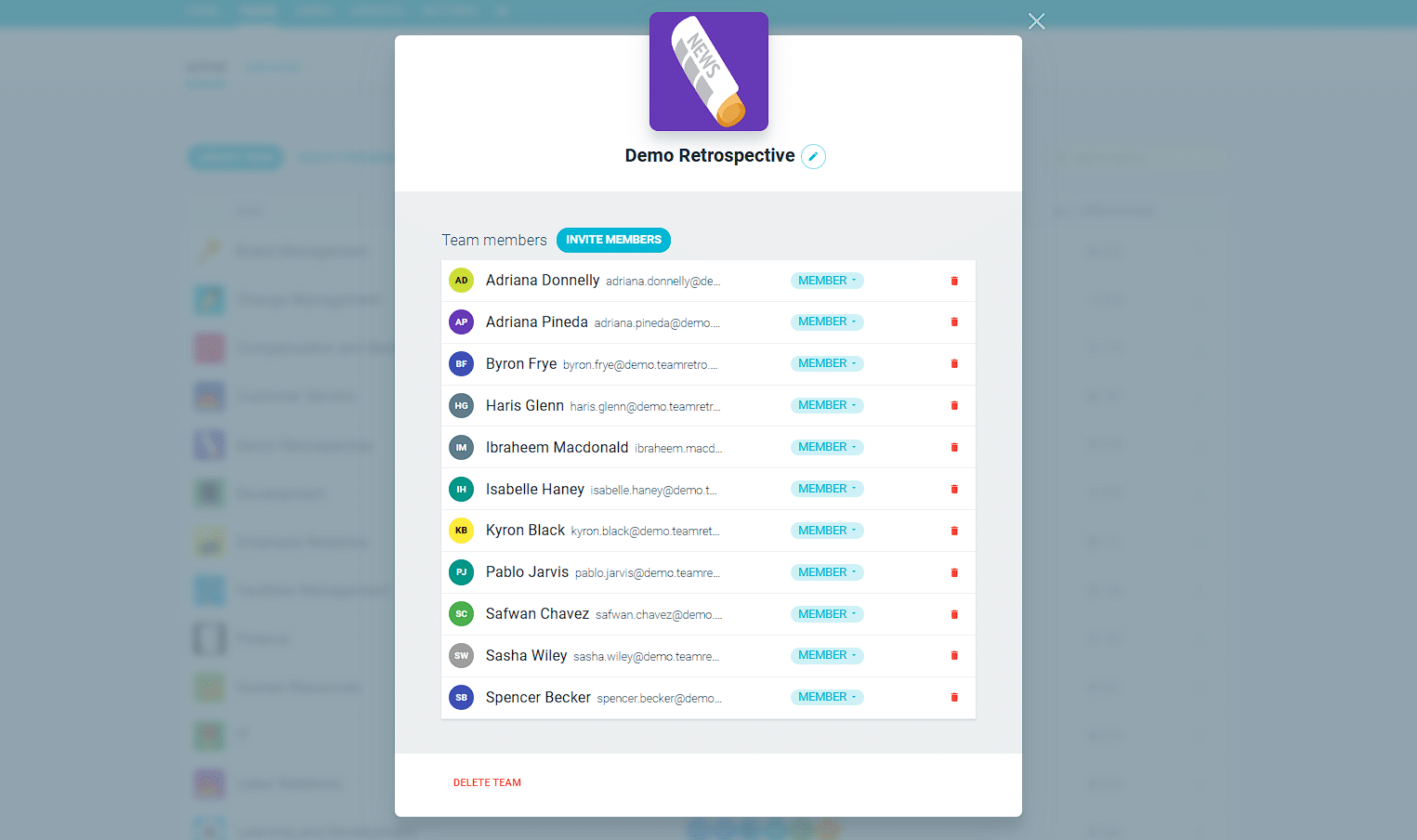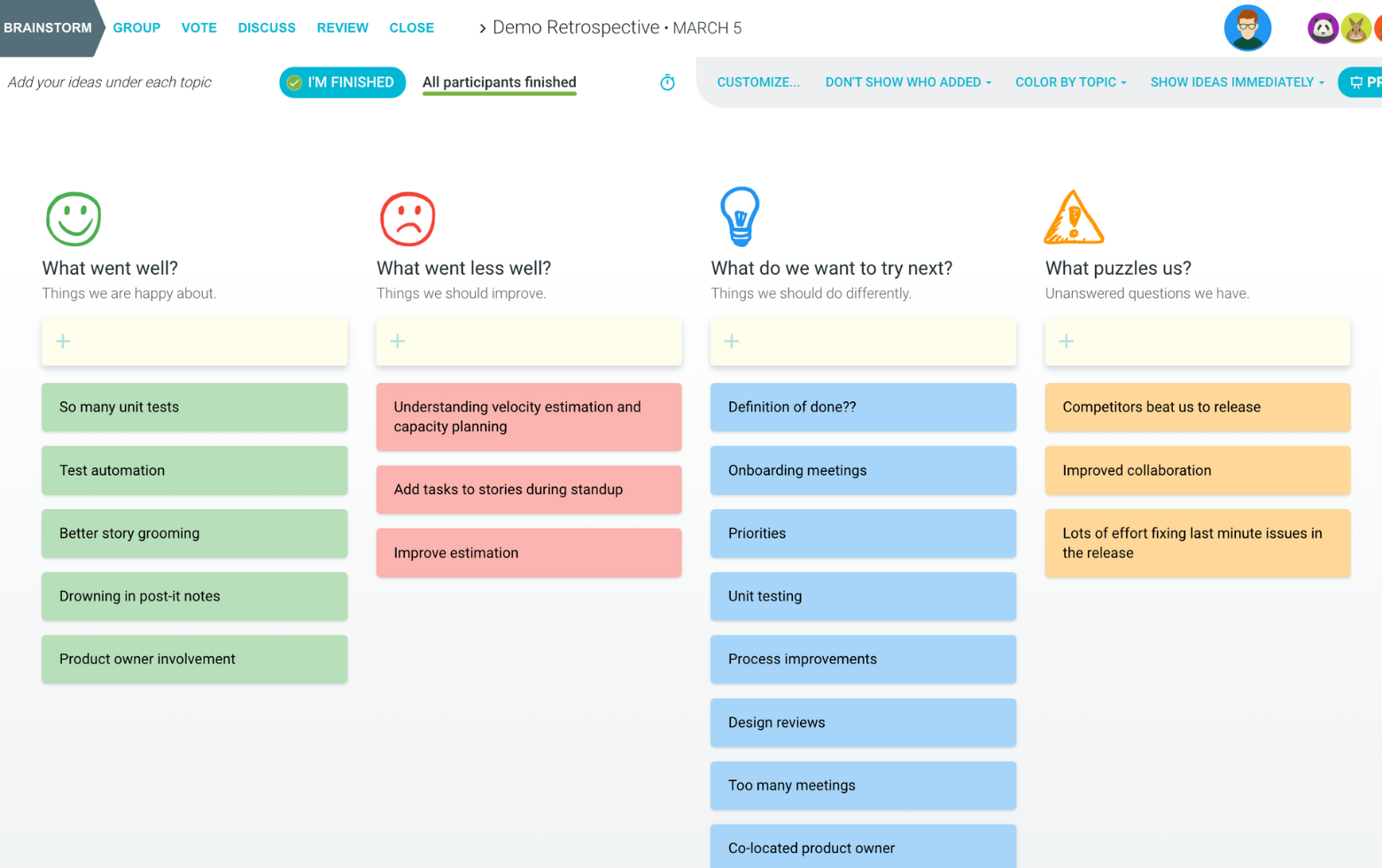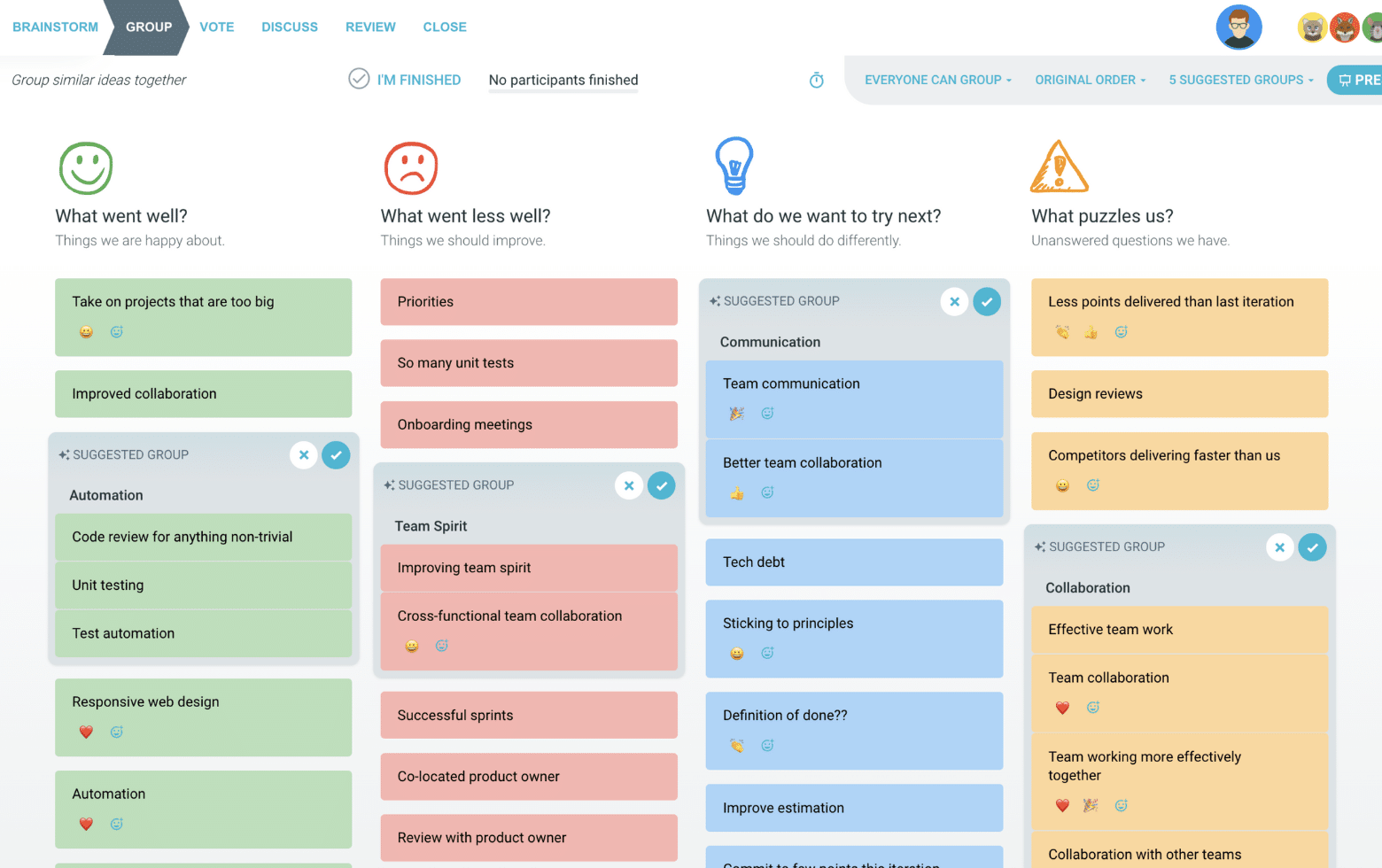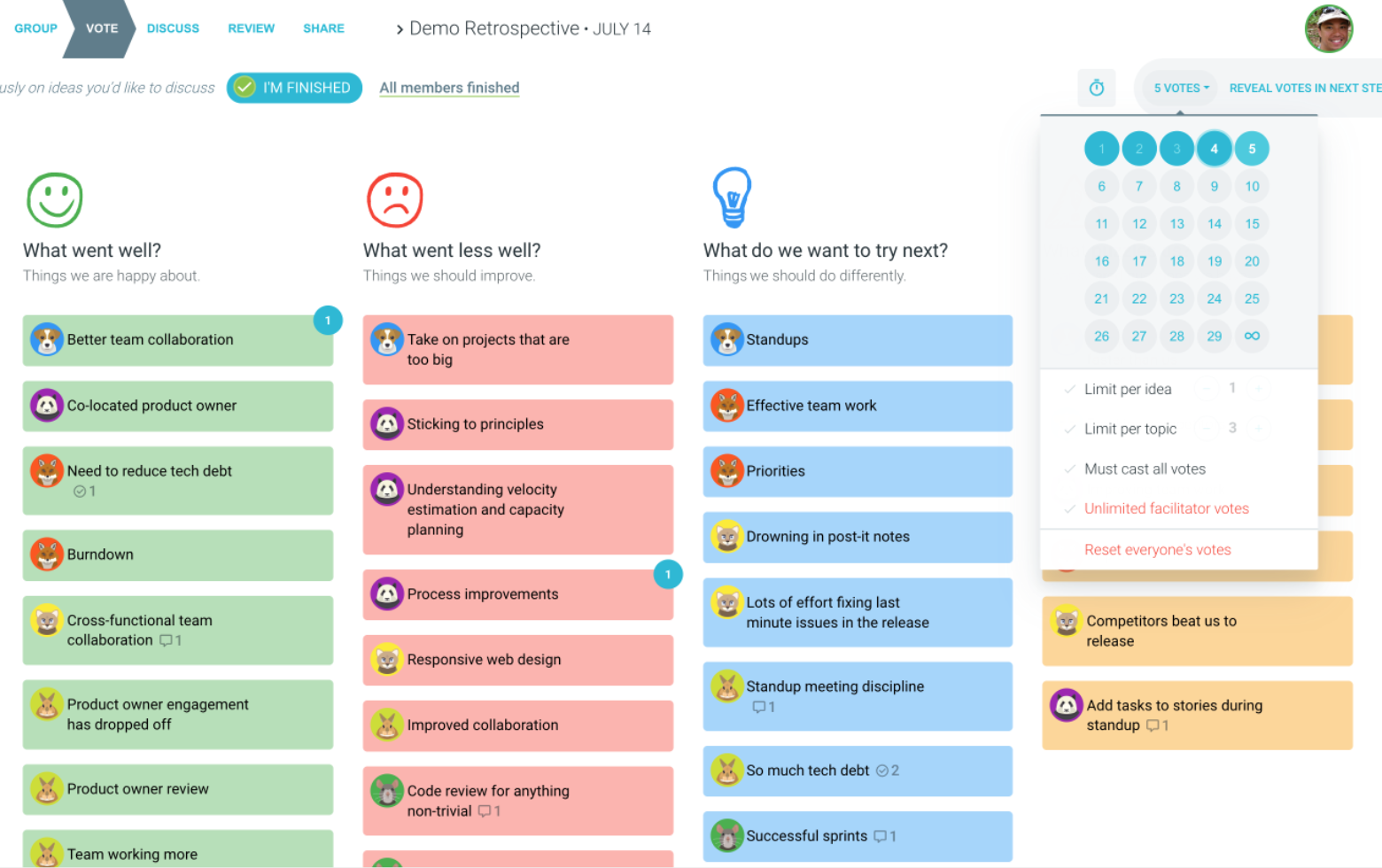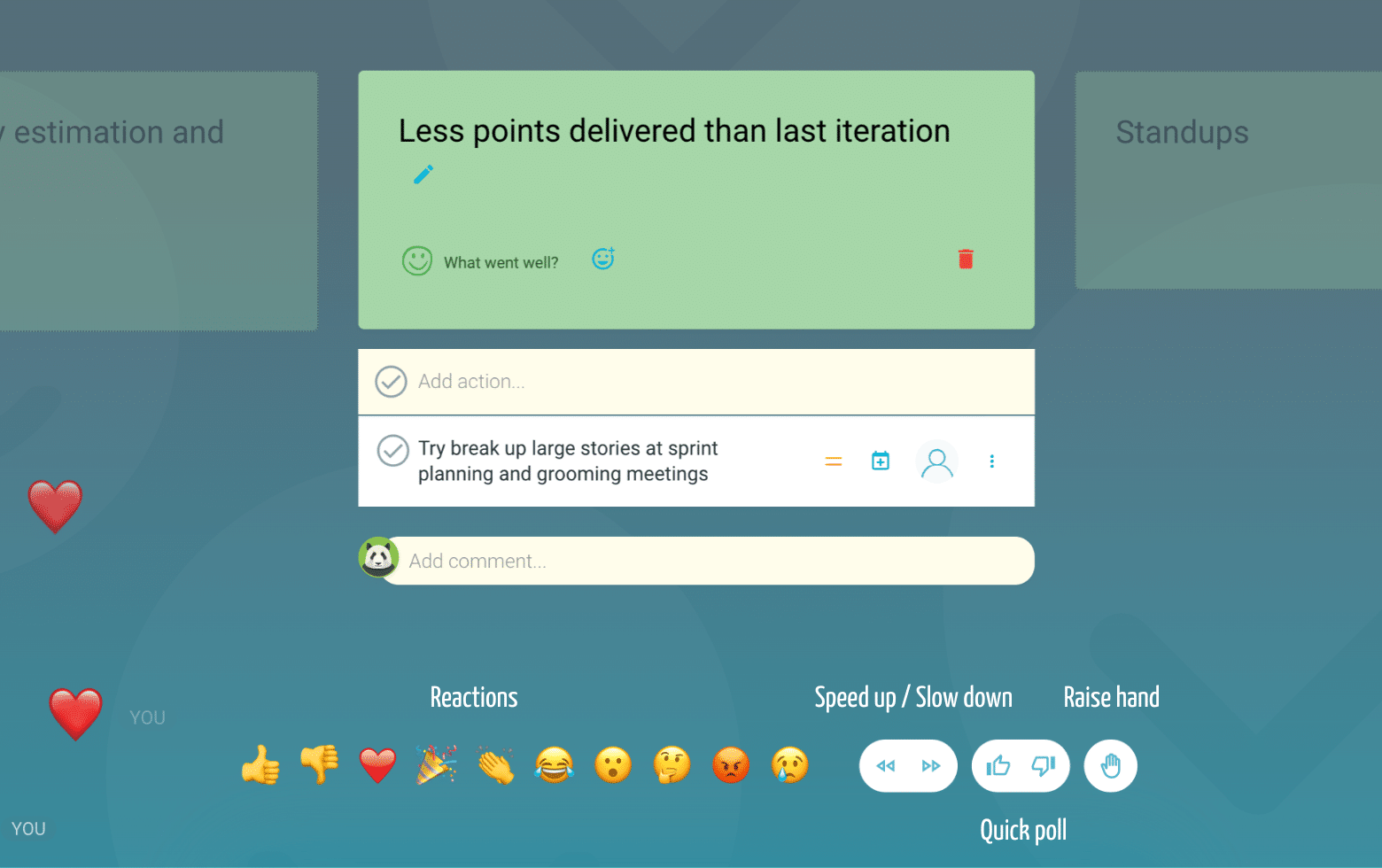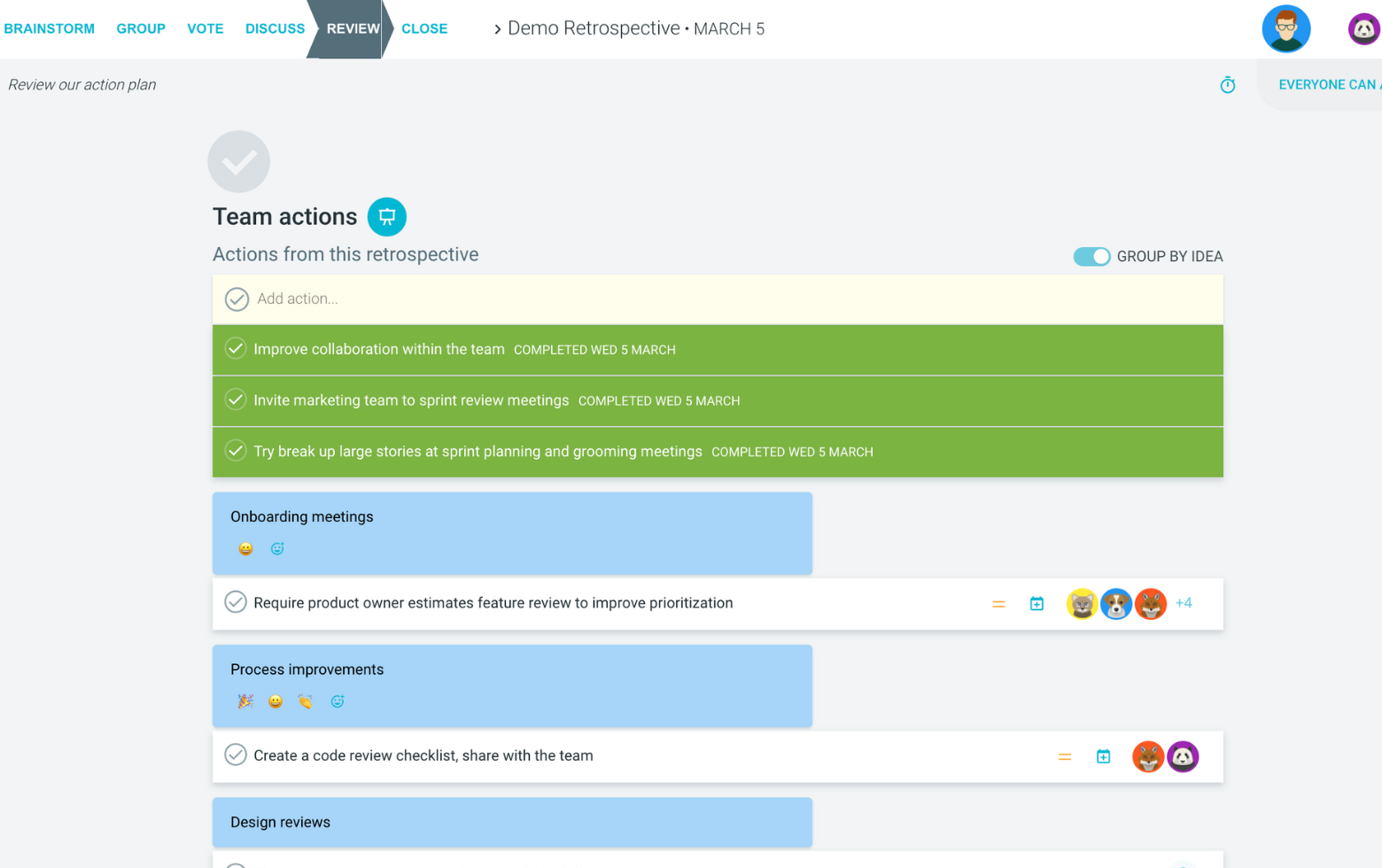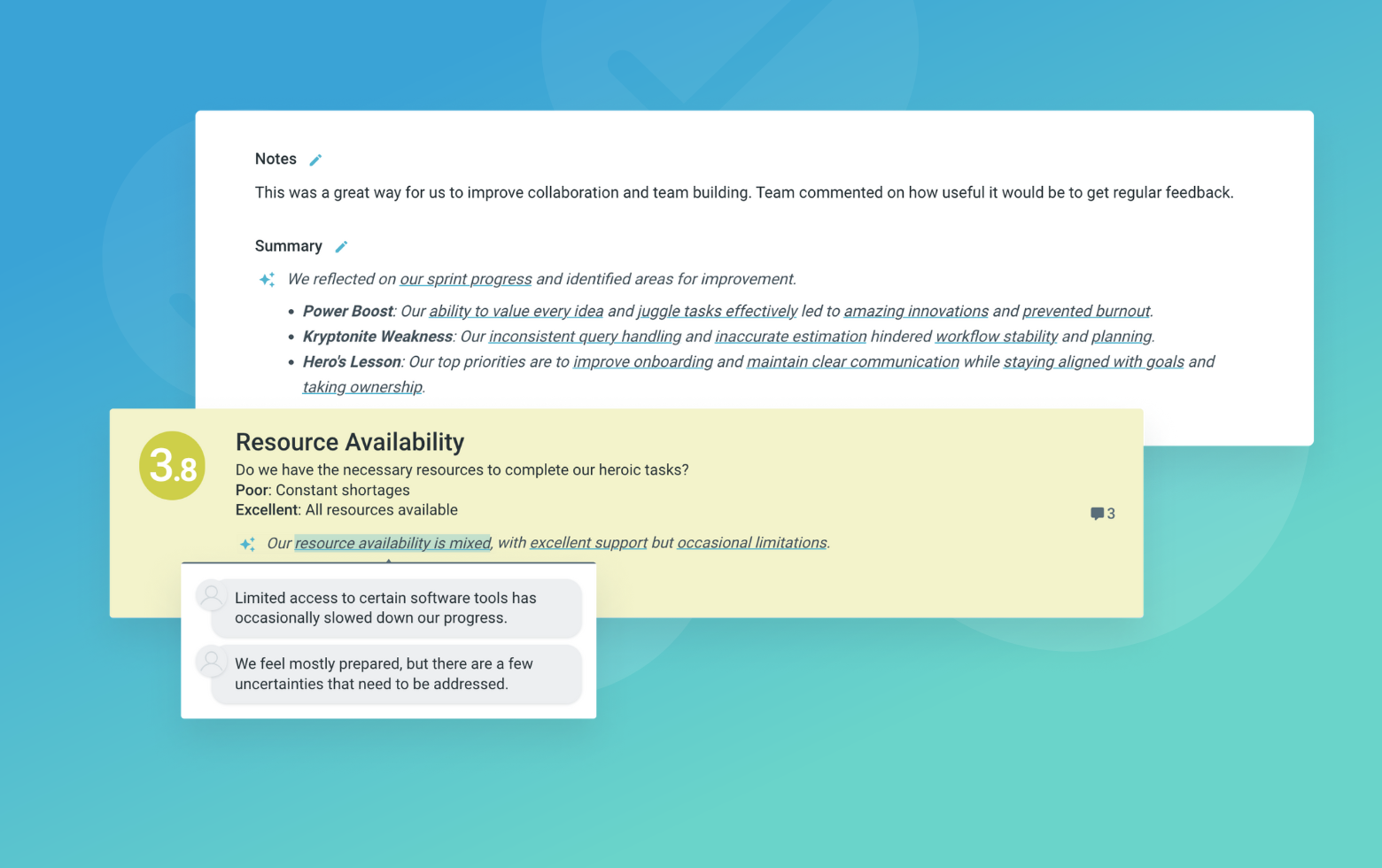A Pipeline Management Retrospective is a structured meeting for teams to reflect on their pipeline processes, identify areas for improvement, and develop actionable strategies to streamline workflows and enhance overall productivity. By fostering open communication and collaboration, this retrospective empowers teams to optimize their pipeline management, leading to increased efficiency, better resource allocation, and ultimately, greater business impact.
This retrospective draws inspiration from agile methodologies and lean principles, encouraging teams to continuously evaluate and refine their pipeline practices. Through facilitated discussions and interactive activities, participants gain valuable insights into bottlenecks, redundancies, and opportunities for automation or process simplification.
By embracing a culture of continuous improvement, teams can proactively address pipeline challenges, foster cross-functional alignment, and cultivate a shared understanding of pipeline priorities and goals. The Pipeline Management Retrospective serves as a powerful tool for driving positive change, enabling teams to adapt swiftly to evolving market demands and stay ahead of the competition.
What is The Pipeline Management Retrospective
Pipeline Bottlenecks
What pipeline stages or processes caused delays or created bottlenecks?
Encourage participants to identify specific pipeline stages or processes that hindered progress or caused unnecessary delays.
Pipeline Streamlining
How can we streamline our pipeline processes for better efficiency?
Encourage participants to suggest practical solutions and strategies to optimize pipeline workflows.
Pipeline Roadblocks
What external or internal factors hindered our pipeline progress?
Encourage participants to identify external market factors, internal policies, or organizational challenges that impacted pipeline performance.
Pipeline Collaboration
How can we foster better collaboration and alignment across pipeline stages?
Encourage participants to suggest strategies for improving cross-functional collaboration and alignment throughout the pipeline.
Suggested icebreaker questions
- If our pipeline was a famous movie, which one would it be and why?
- If you could add one superpower to our pipeline management process, what would it be?
Ideas and tips for your retrospective meeting
- Encourage open and honest feedback by creating a safe and judgment-free environment.
- Involve cross-functional stakeholders from different pipeline stages to gain diverse perspectives.
- Use data and metrics to support observations and identify areas for improvement objectively.
- Prioritize actionable solutions and develop a clear implementation plan with assigned responsibilities.
- Foster a culture of continuous improvement by scheduling regular pipeline retrospectives.
- Celebrate small wins and successes along the way to maintain momentum and engagement.
.
How to run effective meetings with TeamRetro
Start Your Session in a Click
Log into TeamRetro and choose your template. Customise questions and the workflow to create your perfect retro for your team.
Create Your Team Easily – No Separate Accounts Needed
Brainstorm Individually – Free From Bias
Smart Grouping for Faster Insights
Fair, Flexible, and Fast Voting
Engage, React, and Capture Key Insights
Walk your team through ideas one by one with Presentation Mode. Stay in sync, spark real-time discussions, and capture feedback with comments, live reactions, and polls—all in one place.
Turn Ideas Into Action
Propose next steps with team buy-in, get AI-powered action suggestions, and keep everything in one place. Committed actions sync to your personal dashboard and integrate with your workflow tools—keeping you on track.
Save, Share, and Stay on Track
Get quick AI-powered summaries, add facilitator notes, and store retrospectives in your library for easy access. Schedule your next session and track published actions to keep your team accountable at the next retro.
Turn Team Data into Actionable Insights
Uncover trends, common themes, and key engagement metrics at a glance. Track sentiment shifts, analyze conversations, and monitor completed actions to drive continuous improvement.
